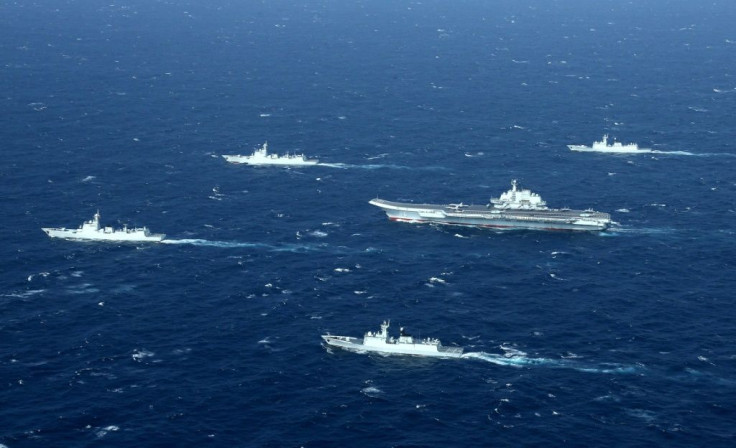South China Sea: PLA Holds Assault Drills Near Taiwan In Response To US 'Provocations'
KEY POINTS
- Taiwan said two nuclear-capable H-6K bombers and six J-16 fighters breached its airspace.
- It said PLA aircraft flew between mainland Taiwan and the Taiwan-controlled Pratas Islands
- Warplanes also briefly entered the strategic Bashi Channel off southern Taiwan
The People's Liberation Army (PLA) launched assault drills Tuesday at multiple locations near the island of Taiwan, in response to what it called "external interference" and "provocations."
Warships and fighter jets, dispatched by the PLA Eastern Theater Command, exercised off the southwest and southeast of Taiwan, practicing joint live-fire assaults, and testing the troops' integrated joint operation capabilities, reports Reuters.
Though China did not give details about the exact location of the military drills, the report, quoting Taiwan's Defence Ministry, said the aircraft flew in an area between mainland Taiwan and the Taiwan-controlled Pratas Islands at the top part of the South China Sea.
Warplanes also briefly entered the strategic Bashi Channel off southern Taiwan that leads to the Pacific.
The ministry said 11 Chinese aircraft entered its air defense zone, including two nuclear-capable H-6K bombers and six J-16 fighters, and that it had scrambled jets to warn the PLA planes away.
A senior official familiar with Taiwan's security planning said PLA Air Force was carrying out a "capturing air supremacy" drill using their advanced J-16 fighters. "In addition to seeking air supremacy over Taiwan, they have also been conducting frequent electronic reconnaissance and electronic interference operations," the unidentified source told Reuters.
According to the source, Taiwan believes China is trying to "gather electronic signals from U.S. and Japanese aircraft so that they can "paralyze reinforcing aircraft including F-35s in a war."
According to Chinese state-backed media Global Times, PLA senior colonel and spokesperson of the Eastern Theater Command Shi Yi said "the U.S. and the Taiwan authorities have been frequently colluding and making provocations, sending wrong signals and severely violating China's sovereignty and seriously damaging peace and stability in the Taiwan Straits."
Shi Yi said the "exercises are necessary, based on the current security situation in the Taiwan Straits and the need to safeguard national sovereignty."
However, Reuters speculated that the PLA military action may have been a response to the U.S. approving the new arms sale package to Taiwan worth $750 million.
Global Times also quoted several Chinese analysts who said the military drill could be "a training for a large-scale amphibious operation" and "likely practiced surgical precision strikes on designated targets within a short period of time."
Last month, China had launched a three-day naval drill in the South China Sea in an apparent rebuke to United Kingdom's carrier strike force sailing in the disputed water. The People's Liberation Army Navy (PLAN) maneuver between Guangdong’s Shangchuan Island and the South China Sea coincided with Queen Elizabeth Carrier Strike Group's entry into the South China Sea.

© Copyright IBTimes 2025. All rights reserved.





















